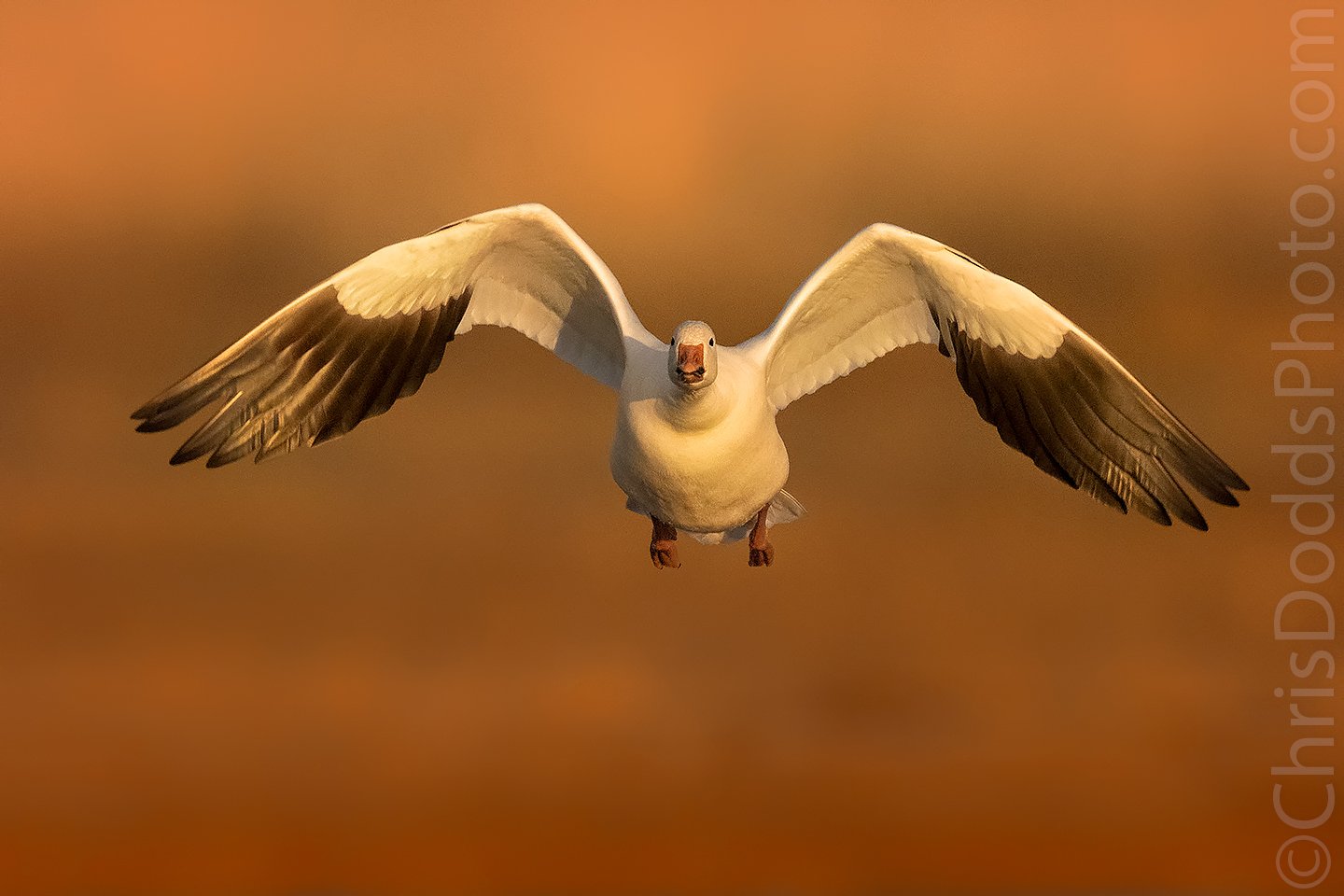Here is another magical memory from last December’s Best of Bosque Workshop in New Mexico. Although the wind direction was wrong, some geese circled on the final approach, and the wind shifted in our favour as the light got sweet - a reward for our patience!
Snow Goose (dark morph, or blue goose) Landing in Golden Light (Chen Caerulescens, Oie des Neiges, SNGO) from my Better than Bosque workshop last Dec. Bosque del Apache National Wildlife Refuge, San Antonio, New Mexico, USA. Image Copyright ©Christopher Dodds. Sony Alpha 1 Mirrorless camera & Sony FE 600mm f/4 G Master OSS Lens with Sony FE 2X Teleconverter @1,200mm ISO 2,000, f/8 @ 1/5,000s Manual exposure. Full Frame image top to bottom - cropped left side to 4x5 aspect ratio.














